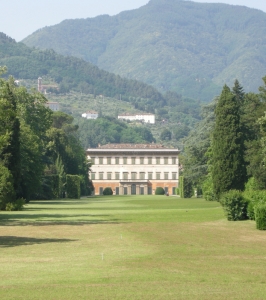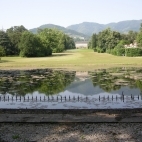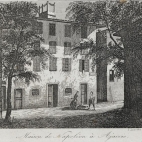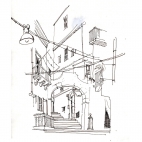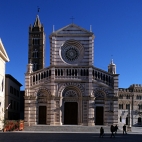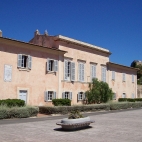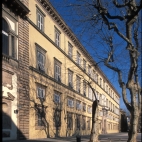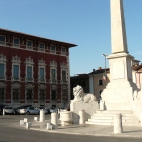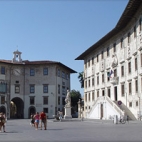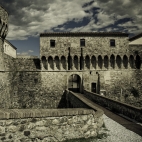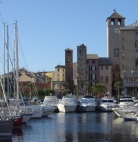The Villa Reale in Marlia
In 1806 Élisa Bonaparte Baciocchi, having become princess of Lucca, acquired the splendid villa that had belonged to the Orsetti family – members of the Lucca aristocracy – since the beginning of the seventeenth century, as well as the grounds of the villa, in order to establish her residence outside the city. Élisa transformed the villa into an even more sumptuous country residence, further expanded when the princess also became the owner of the nearby property once belonging to the Bishop.
The renovation work was entrusted to the Lucca architect Giovanni Lazzarini and to Théodore Bienaimé, who was sent for in Paris in 1807. The two were succeeded by Giuseppe Marchelli in 1809 and the result was a residence marked by powerful stylistic unity between the architecture and the decoration, in line with the principles of the Parisian school of Percier and Fontaine, where Marchelli had received his training. Numerous stucco artists and painters, French and Italian alike, were employed for the decorations, among whom was Stefano Tofanelli, who created the fresco of the Dance of the Hours on the ceiling of the dance hall on the ground floor, completed by Jean–Baptiste Desmarais due to the artist’s death.
Élisa felt a special love for her country residence, in part due to her affectionate friendship with the Great Squire, Bartolomeo Cenami. She passed a great deal of time there, opening the grounds to the population on numerous occasions for parties organized on the occasion of special annual events and setting up countless magnificent concerts and dances, at which Niccolò Paganini also performed.
Villa Reale
viale Europa
Marlia (Lucca)
Only the grounds are open to visitors
http://www.parcovillareale.it/









